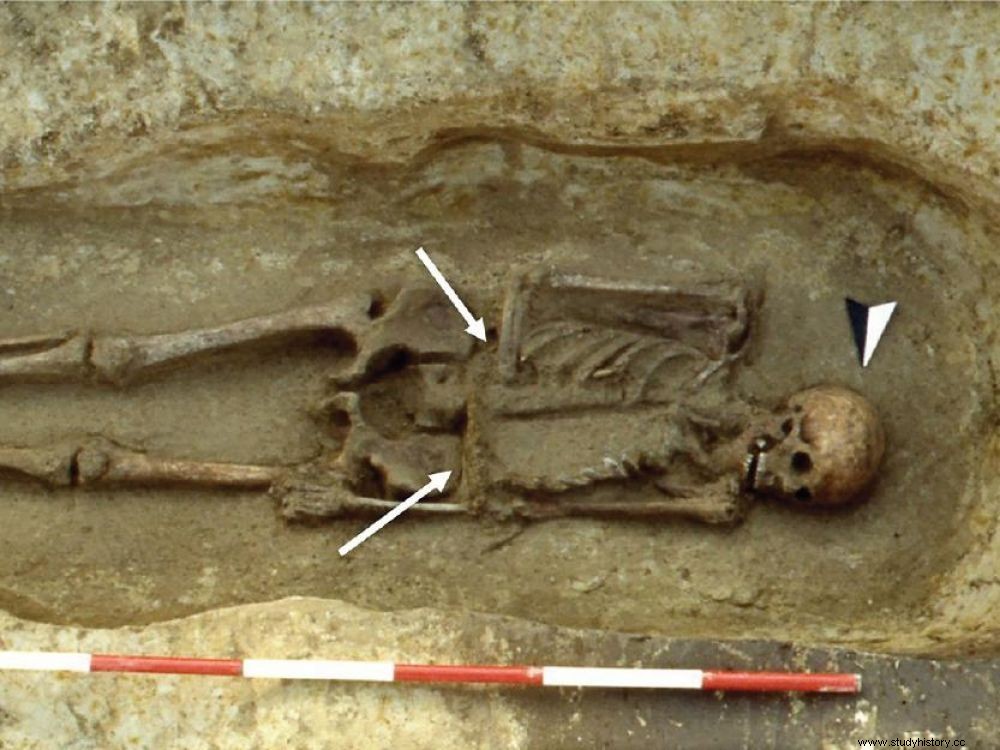An Italian team describes in a study a singular burial of the Middle Ages:that of a man with an amputated arm and replaced by a blade!

The burial contained the body of a man in his fifties with his right arm amputated and replaced by a knife blade.
The Lombard cemeteries are definitely full of surprises. After the announcement in April 2018 of the discovery of a case of coffin birth, an Italian team publishes the study of another singular burial from this period. That of a man with an amputated arm and obviously an emulator of Wolverine, the comic book character interpreted in the cinema by Hugh Jackman.
For a 6th-century Lombard, there are plenty of opportunities to lose his arm
The tomb is actually a fairly old find. The site of Povegliano Veronese dates from the 6th to 7th centuries AD, at the very beginning of the Middle Ages. It was excavated twice six to seven years apart, in 1985-86 and 1992-93. The tomb of the superhero Lombard is then drowned in the mass of 164 graves and 222 bodies found. More than twenty years after its discovery, the team of scientists led by Ileana Micarelli from La Sapienza University in Rome has looked into its case.
Bone analysis indicates that the individual in tomb T US 380 was nearly 50 years old when he died. The most striking feature of the skeleton is obviously his severed right arm, but his bones have revealed much more information. The study of strontium from his teeth, for example, shows that it was not native to the region. Indeed, the Lombards invaded northern Italy in 568. They previously lived along the Danube in Pannonia. For a sixth-century Lombard, there were plenty of opportunities to lose his arm. Malformation, accidents, legal decisions or fights are the most common. Here, the arm was lost to blunt force trauma while the individual was still young. The care of his community in caring for him suggests that the amputation was the result of an accident or an act of war."It highlights a community-level effort to provide an ideal setting for healing" , write the authors of the study. "A clean environment and intensive care during the early stages of recovery...It seems unlikely that a criminal would have received such medical treatment."
A remarkable prosthesis
Upon closer examination of the end of the amputated arm, the team of scientists noticed signs of biomechanical pressure - remodeling of both bones to form a callus, and a bone spur on the ulna. Signs consistent with the kind of pressure that might have been applied by a prosthesis, a kind of leather hood, tightened with a strap around the stump to protect it. His was special. "Archaeological evidence suggests a hood-like prosthesis with a modified weapon blade", explain the researchers. The arm of the deceased rested on his abdomen and a small seax - a knife blade - extended it. A loop still imprinted with decomposed organic matter had fallen next to the bone. The wear on the deceased's incisors show that he took it off and put it back on frequently, using his teeth to undo or tighten the leather strap that passed through the buckle. A gesture not so far from those that we can do today to undo a knot, open a plastic bag or chew on a pen.
